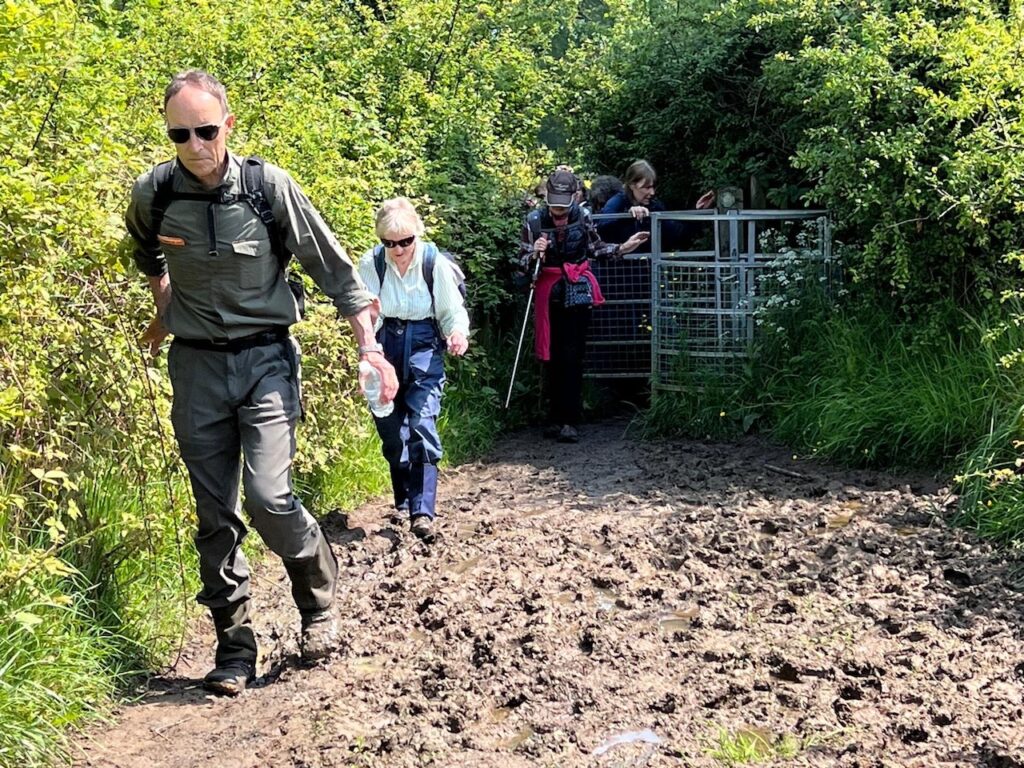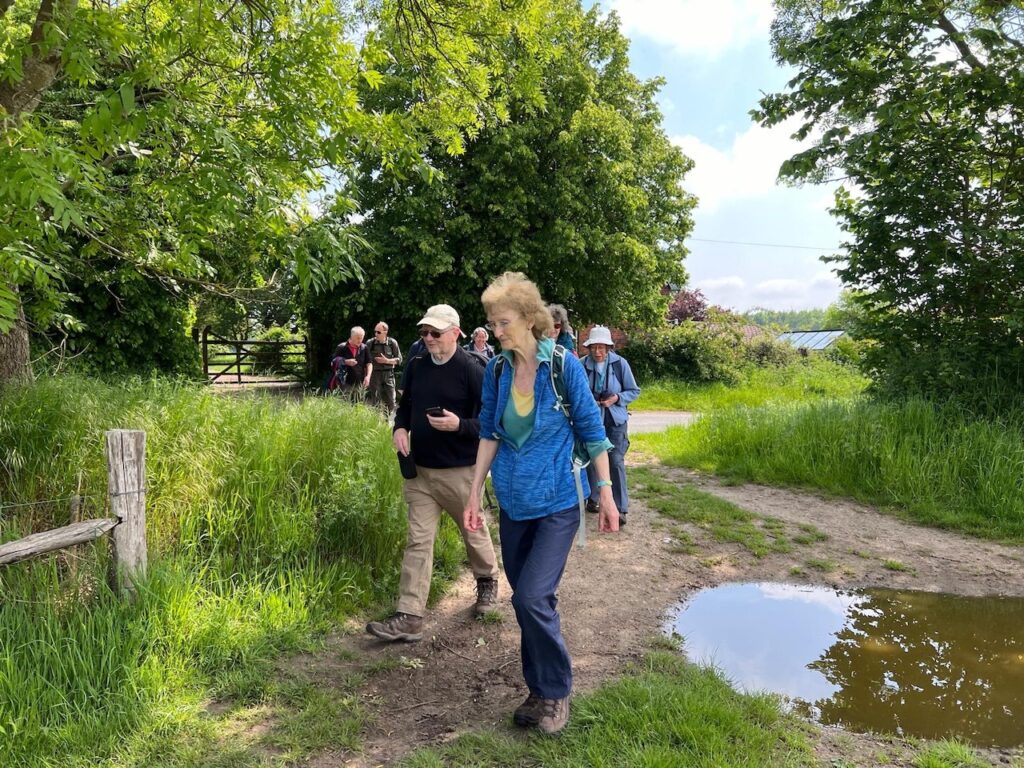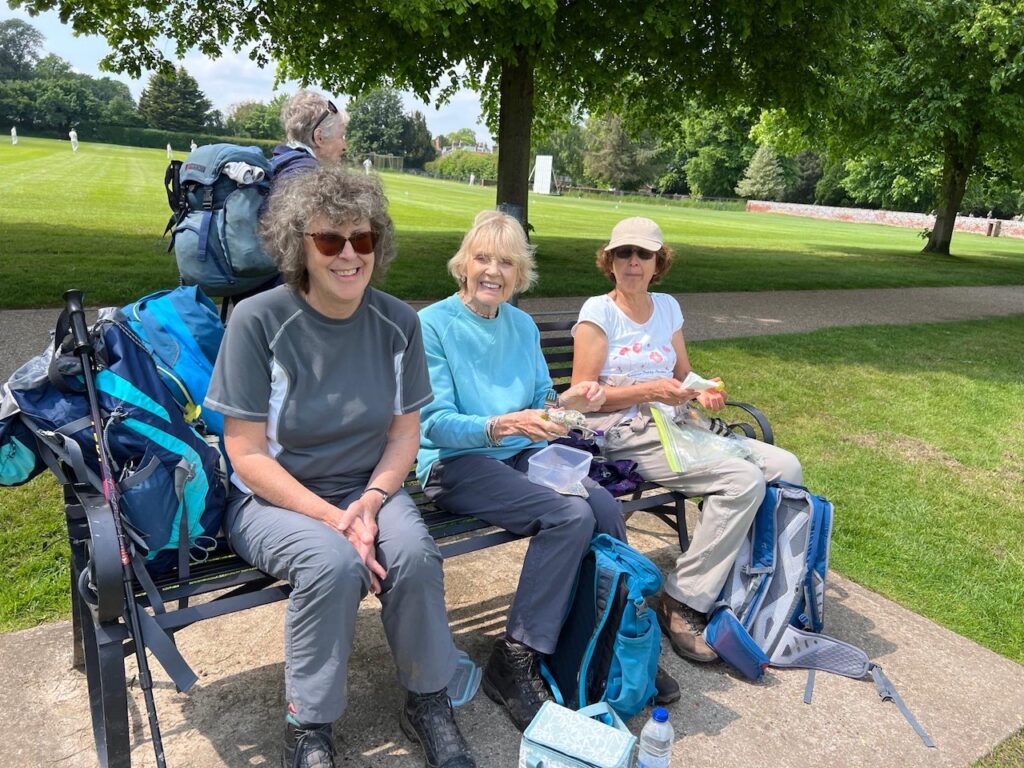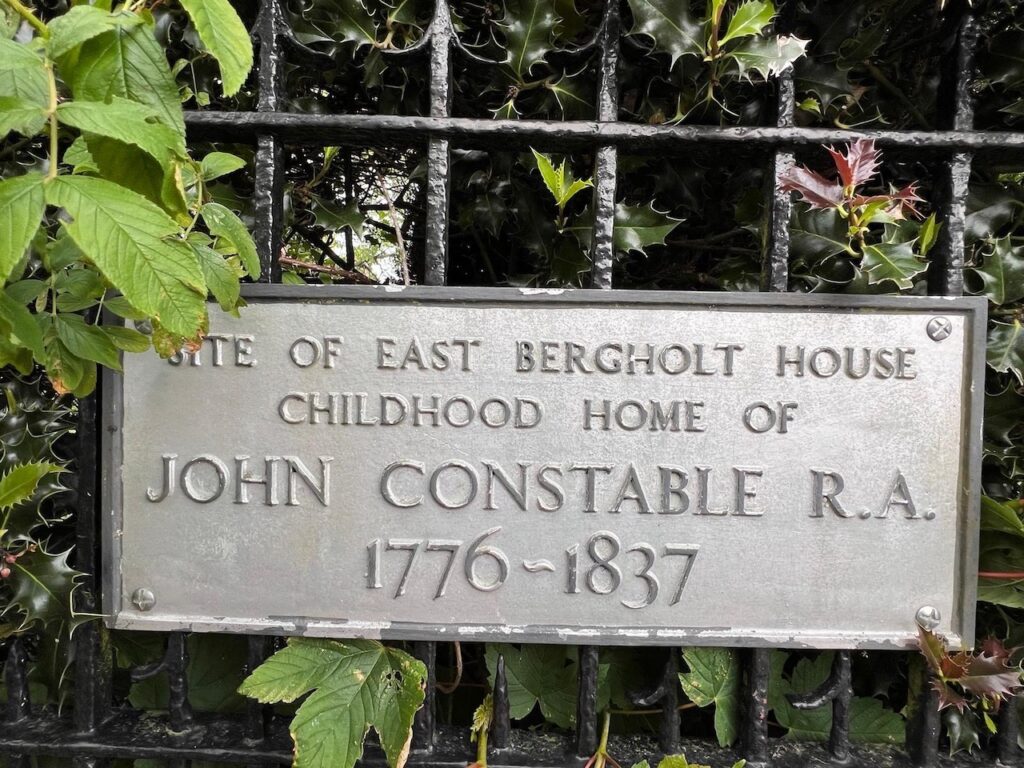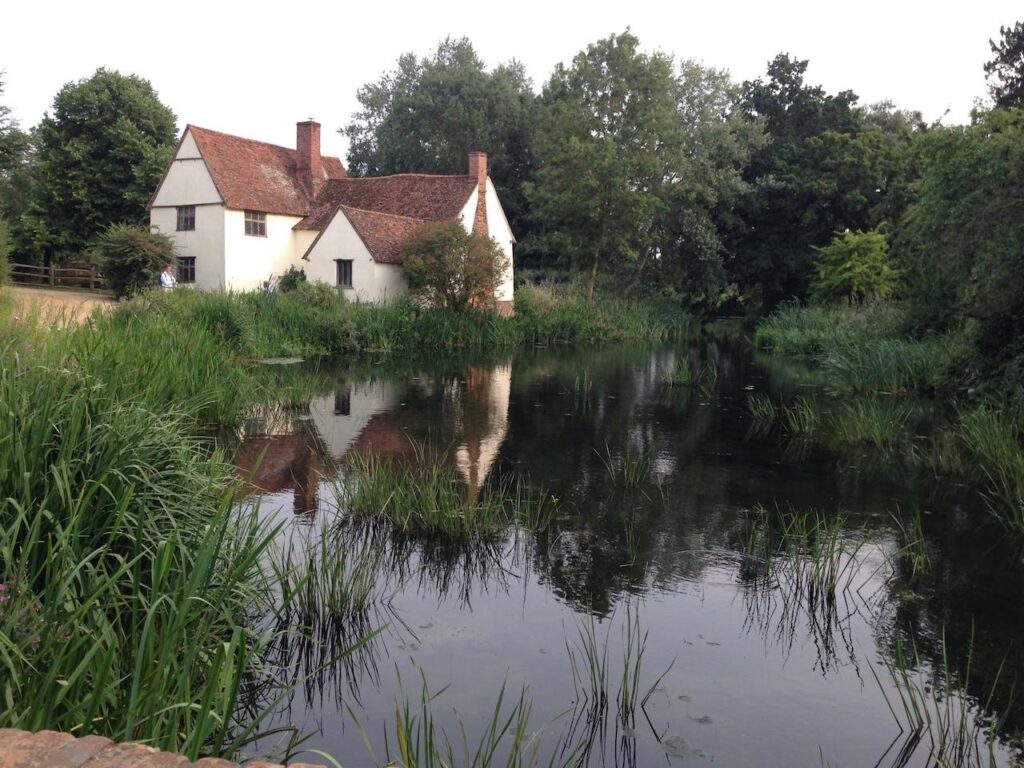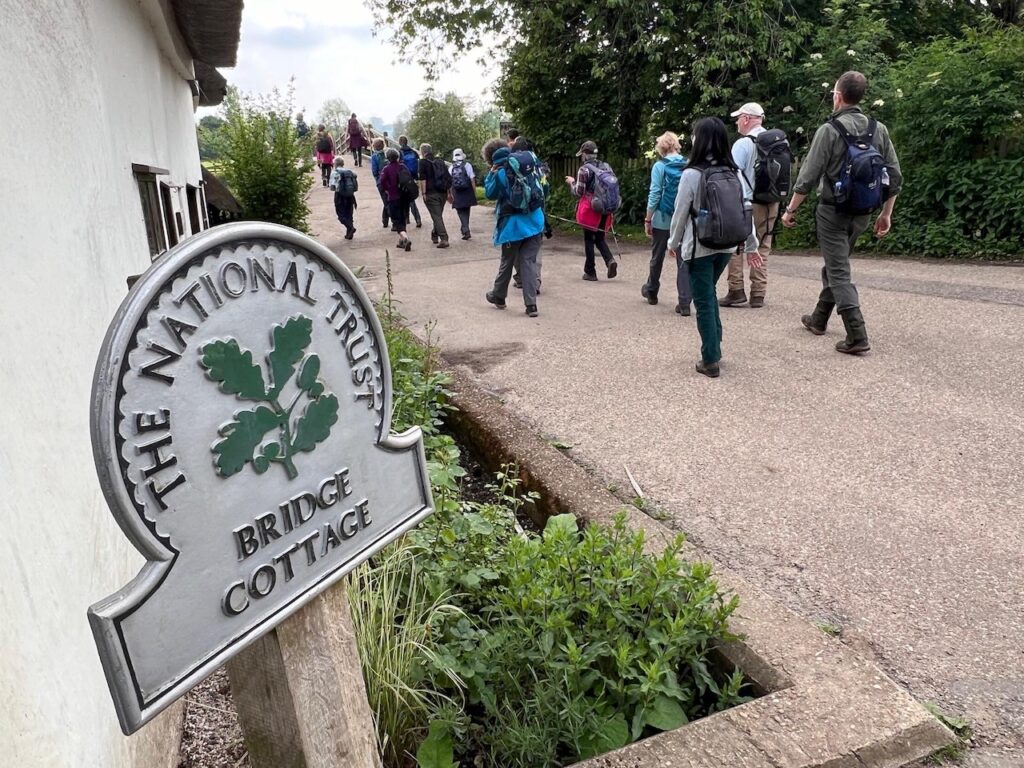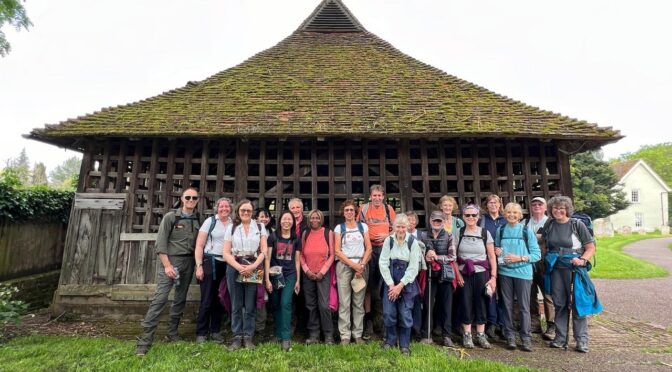The BBC had forecast that there would be rain in the morning but the rain had arrived very early and by the time 19 ramblers assembled outside Manningtree station the clouds had rolled back and the sun was shining. We were lucky that it remained dry and sunny all day.
After the briefing we set out. The walk in its entirety was relatively flat and there were mud and puddles in only a few places which was not as bad as I had feared. We walked through lovely quiet spring countryside and sometimes all we could hear was the sound of birds in full song. We came to the pretty village of Dedham with its brightly coloured houses where we stopped for lunch, with those who had brought a packed lunch sitting in a nearby park watching the local team play cricket and a small group of poly’s eating at a café in the Arts and Craft Centre.
After lunch we made our way out of the village until our path turned off the road and across fields towards the village of Stratford St Mary. There was an ominous sign saying ‘Beware of the Bull’ on the stile entering the field. There was no sign of a bull or any cattle, so we decided to cross the field. Then in the distance we saw cattle in a field beyond that we would have to pass through. It was clear as we got close that there was a large number of cows and some young animals which always makes me wary. However, as they were some distance from us we decided to venture across the field keeping close to its edge and in quiet single file so that we did not excite them. Thankfully we managed to get everyone across safely and it was only when I looked back that I spotted a large bull amongst the herd. I might not have been quite so confident about leading the group into that field if I had seen him.
Our peaceful walk was soon shattered by the drone of traffic on the A12 which we passed very close to, but this soon faded as we struck out across ploughed fields in the direction of the village of East Bergholt where the eighteenth century English painter John Constable was born and brought up. Although Constable spent much of his time in London, he always returned to the Stour valley to paint and many of his iconic landscape paintings are of scenes from this area.
Whilst in East Bergholt we went to look at the church and, in the churchyard, the Bell cage built in 1531 to house the church bells as a temporary measure whilst the tower was being rebuilt. It became a permanent structure and houses the heaviest peal of five bells in the country which are still rung by a team of ringers for special occasions.
It was a short walk from East Bergholt to Flatford Mill, the scene of John Constable’s most famous painting, The Haywain, where we saw the old mill and Willy Lot’s cottage. The old mill is now a field study centre, and the National Trust have a very nice tea room where we stopped and had refreshments in the garden next to the river.
From Flatford Mill it was a short walk across water meadows bordering the Stour that were full of birdsong, back to Manningtree station where the train for London was already waiting. Thankfully the guard held up the train to allow us to all embark before the train left for London.
Mary K
Photos by Ida, Mary and Chris
